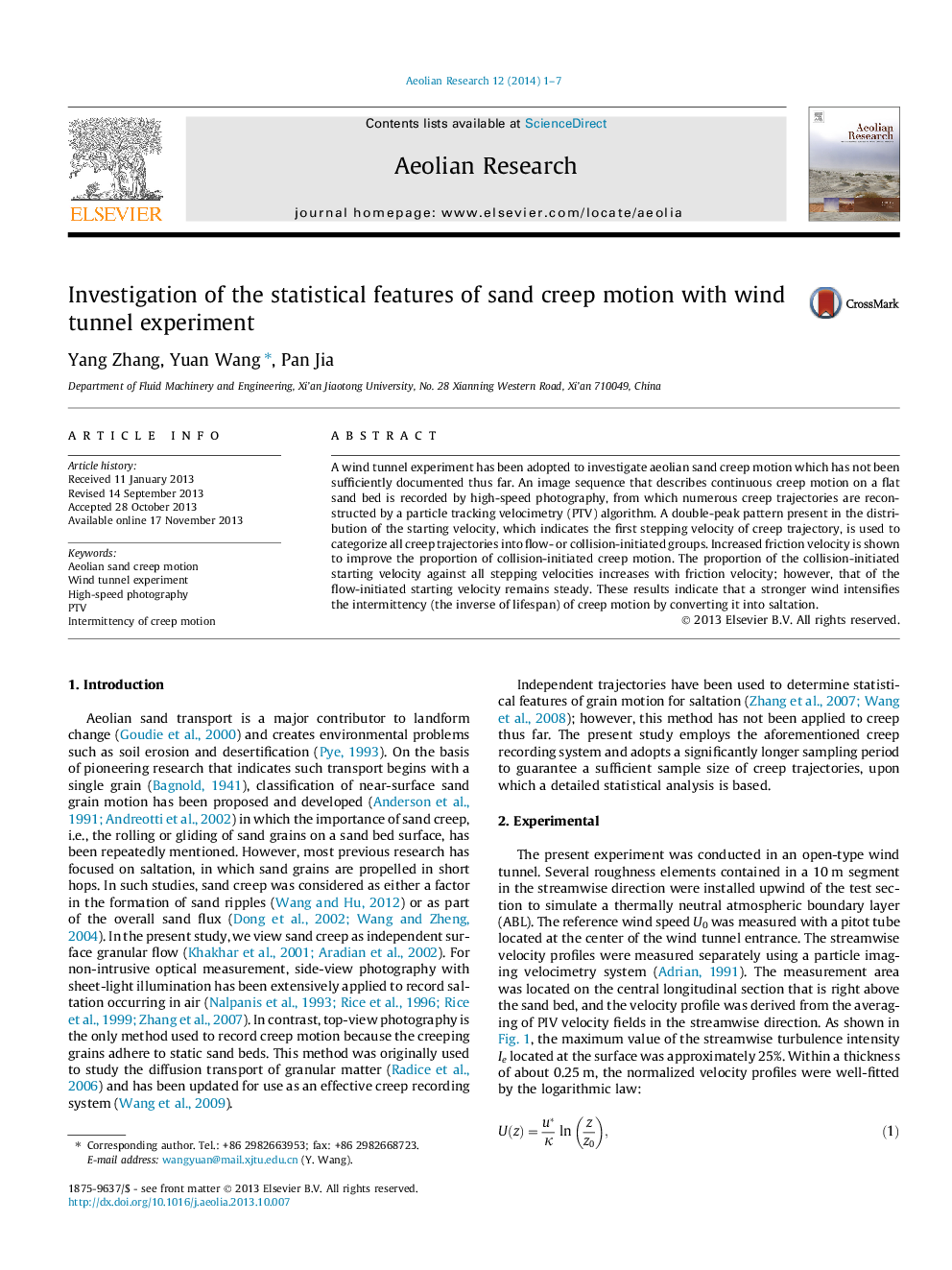| Article ID | Journal | Published Year | Pages | File Type |
|---|---|---|---|---|
| 4673795 | Aeolian Research | 2014 | 7 Pages |
•Sand creep motion is an important mechanism in aeolian sand transport.•A wind tunnel experiment was conducted to record sand creep motion.•Creep trajectories were abstracted by a discrete particle tracking algorithm.•The collection of creep trajectories was analyzed statistically.•The features of two types of sand creep motion were thereby obtained.
A wind tunnel experiment has been adopted to investigate aeolian sand creep motion which has not been sufficiently documented thus far. An image sequence that describes continuous creep motion on a flat sand bed is recorded by high-speed photography, from which numerous creep trajectories are reconstructed by a particle tracking velocimetry (PTV) algorithm. A double-peak pattern present in the distribution of the starting velocity, which indicates the first stepping velocity of creep trajectory, is used to categorize all creep trajectories into flow- or collision-initiated groups. Increased friction velocity is shown to improve the proportion of collision-initiated creep motion. The proportion of the collision-initiated starting velocity against all stepping velocities increases with friction velocity; however, that of the flow-initiated starting velocity remains steady. These results indicate that a stronger wind intensifies the intermittency (the inverse of lifespan) of creep motion by converting it into saltation.
